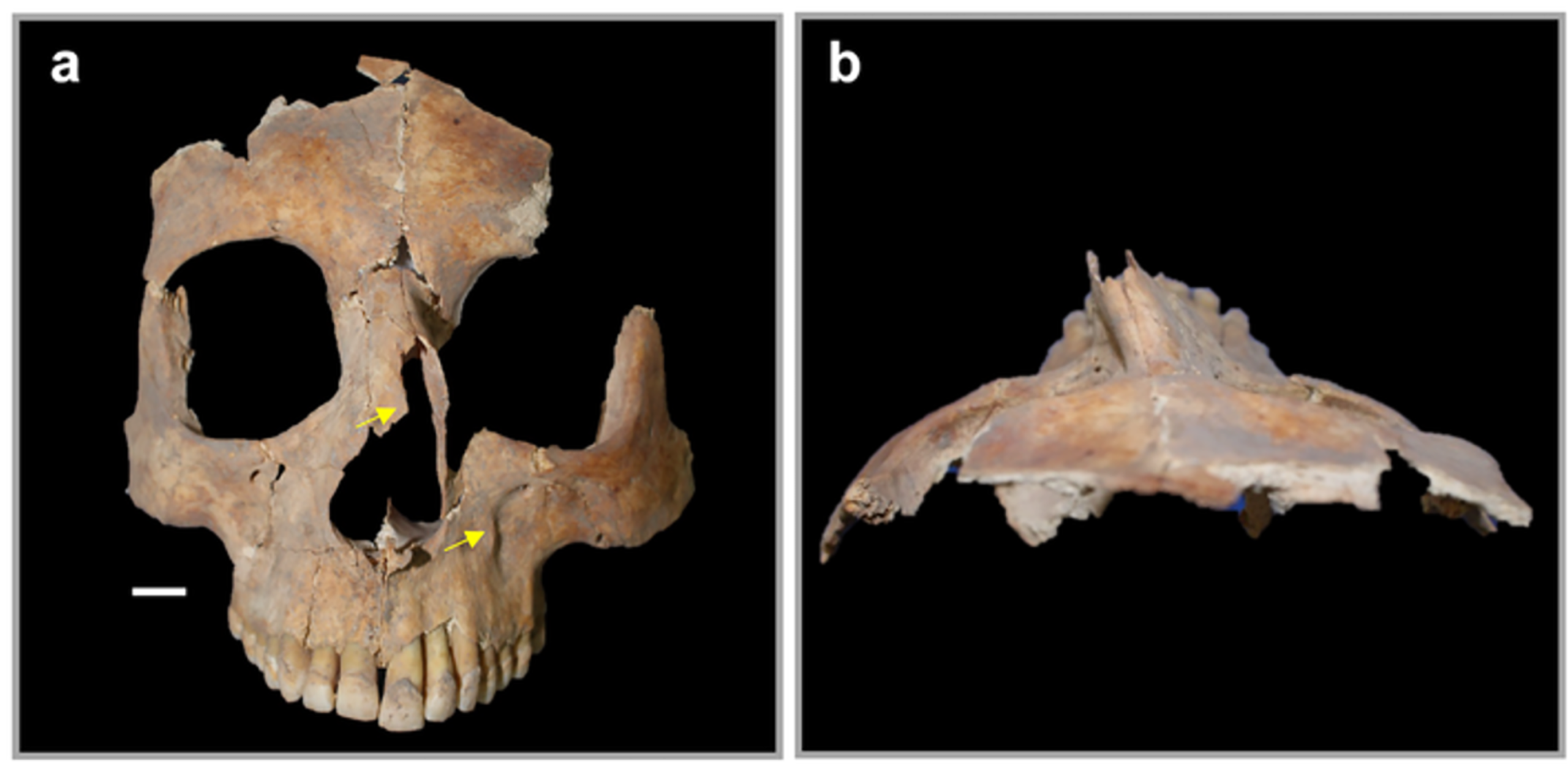 Earliest Evidence of Brain Surgery Found in Israel. Credit: Kalisher et al / CC BY 4.0
Earliest Evidence of Brain Surgery Found in Israel. Credit: Kalisher et al / CC BY 4.0An Israeli archaeological team has discovered significant artifacts from an “uncommon” sort of brain surgery, performed in approximately 1500 B.C. In the archaeological site of Tel Megiddo, a tomb was found to contain the skeletal remains of two people. It is believed that the individuals were brothers.
One of the skulls featured a hole that was 30 millimeters square and was located in the frontal bone. This hole was created when a portion of the skull was surgically removed as part of an old medical practice known as trephination.
Ms. Rachel Kalisher, a student at Brown University’s Joukowsky Institute for Archaeology and the Ancient World in the US said, “We have evidence that trephination has been this universal, widespread type of surgery for thousands of years. But in the Near East, we don’t see it so often – there are only about a dozen examples of trephination in this entire region.”
In modern medicine, a treatment called craniotomy is used to treat tumors or blood clots, as well as to remove foreign objects like bullets from the skull.
Uncommon and Expensive Medical Therapy
The investigation led the researchers to conclude that one of the brothers had had angular notched trephination, which is a specialized kind of cranial surgery. The method entails cutting four lines through the skull in order to create a square hole.
In the study published in the journal Plos One, the researchers wrote, “Among the study’s multiple findings, we wish to highlight the special type of cranial trephination, the earliest of its kind in the region. This uncommon procedure was done on an elite individual with both developmental anomalies and infectious disease, which leads us to posit that this operation may have been an intervention to deteriorating health.”
According to the opinions of medical specialists, this kind of medical therapy was very uncommon in the area and only available to the wealthy.
Archeological remains of patients of brain surgery performed by ancient doctors of Inca Empire, 15th century.
Incan people practiced brain surgery, in which a piece was chipped out of skull, part of brain removed and hole covered by metal beaten flat.
📷 : Thomas Quine pic.twitter.com/54A9rPKT0r
— Archaeo – Histories (@archeohistories) November 7, 2021
According to the findings of the analysis of the bones, both brothers suffered from some kind of chronic illness. The researchers are of the impression that the wealthy brothers spent some time in Megiddo in the 15th century BC. These graves were found to contain high-quality items of food as well as pottery comparable to those found in other neighboring tombs of high-ranking individuals.
It is believed that one of the brothers passed away while he was in his teens or early 20s, and the other passed away at some point between the ages of 20 and 40, both of them perhaps due to an infectious ailment.
Ms. Rachel Kalisher said, “These brothers were obviously living with some pretty intense pathological circumstances that, in this time, would have been tough to endure without wealth and status.”
Significance of the Discovery
Experts have stated that the discovery is significant as it sheds light on the practice of ancient medicine, revealing how medical interventions were carried out in a time before modern medicine.
The researchers believe that the trephination was done with the aim of alleviating the symptoms of chronic disease, although they admit that it is impossible to know the exact reason for the surgery.

 1 year ago
71
1 year ago
71











 English (US)
English (US)